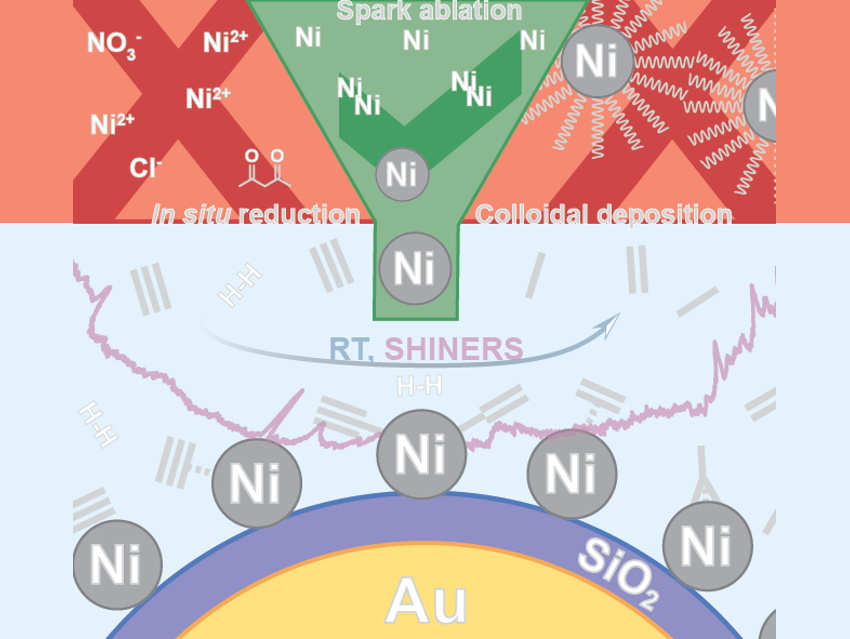Shell-isolated nanoparticle-enhanced Raman spectroscopy (SHINERS) is a surface-sensitive vibrational spectroscopy technique that is useful in catalysis research. To achieve a local signal enhancement in SHINERS, catalysts are supported on Au nanoparticles (NPs) coated with a thin layer of SiO2 (pictured). This works well for easily reducible noble metals, but is challenging for base metals, which require high reduction temperatures that are not compatible with the stability of Au@SiO2 NPs. Yet, base metals such as nickel are found in highly relevant catalysts used in many reactions in industry and the energy sector.
Bert M. Weckhuysen, Utrecht University, The Netherlands, and colleagues have developed a method to prepare active Ni catalysts for SHINERS. The team used spark ablation as a physical production method for NPs. Spark ablation uses an electrical spark to create NPs from a solid material, which are then transported to the desired target as an aerosol in a carrier gas. With this approach, the researchers deposited ligand-free metallic Ni NPs directly on Au@SiO2 NPs which were fixed on a Si wafer.
The resulting system was used for the in situ SHINERS investigation of acetylene hydrogenation. This study revealed previously unobserved species during the catalysis process. Overall, this work could lead to in-depth studies of structure–performance relationships of industrially relevant materials and reactions by combining SHINERS with versatile spark ablation methods.
- In Situ Shell‐Isolated Nanoparticle‐Enhanced Raman Spectroscopy of Nickel‐Catalyzed Hydrogenation Reactions ,
Caterina S. Wondergem, Josepha J. G. Kromwijk, Mark Slagter, Wilbert L. Vrijburg, Emiel J. M. Hensen, Matteo Monai, Charlotte Vogt, Bert M. Weckhuysen,
ChemPhysChem 2020.
https://doi.org/10.1002/cphc.201901162



